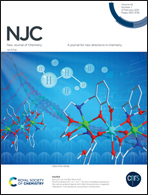Theoretical evaluation of the corrosion inhibition performance of aliphatic dipeptides†
Abstract
Corrosion significantly limits the operational capabilities of metals and alloys reducing their service life. Finding environmentally friendly and economically justified alternatives to commercially used corrosion inhibitors is an important problem. Amino acids are promising compounds from a wide class of organic inhibitors. In this work, using the example of aliphatic amino acids glycine (Gly) and alanine (Ala) and their dipeptides, a quantum-chemical and Monte Carlo evaluation of their inhibitory effect is given and the conditions for the increase in their inhibitory effect in comparison with individual amino acids are studied. The role of the peptide bond in increasing the inhibitory effect of compounds based on aliphatic amino acids and expansion of their application to media with different pH is studied. The impact of the amino acid sequence when synthesizing dipeptides on their inhibitory effect has been revealed. The peptide molecular group participates in donor-accepting processes interacting with the metal surface. It is an additional adsorption center that can boost adsorption interaction with the metal surface which enhances the inhibitory effect. Aliphatic dipeptides based on Ala and Gly show an improved inhibitory effect compared to amino acids in an acidic medium according to Monte Carlo simulations. The theoretical results are in agreement with the experimental data. The results obtained can be of interest as a starting point for studying large peptide chains which require significant computational resources.



 Please wait while we load your content...
Please wait while we load your content...